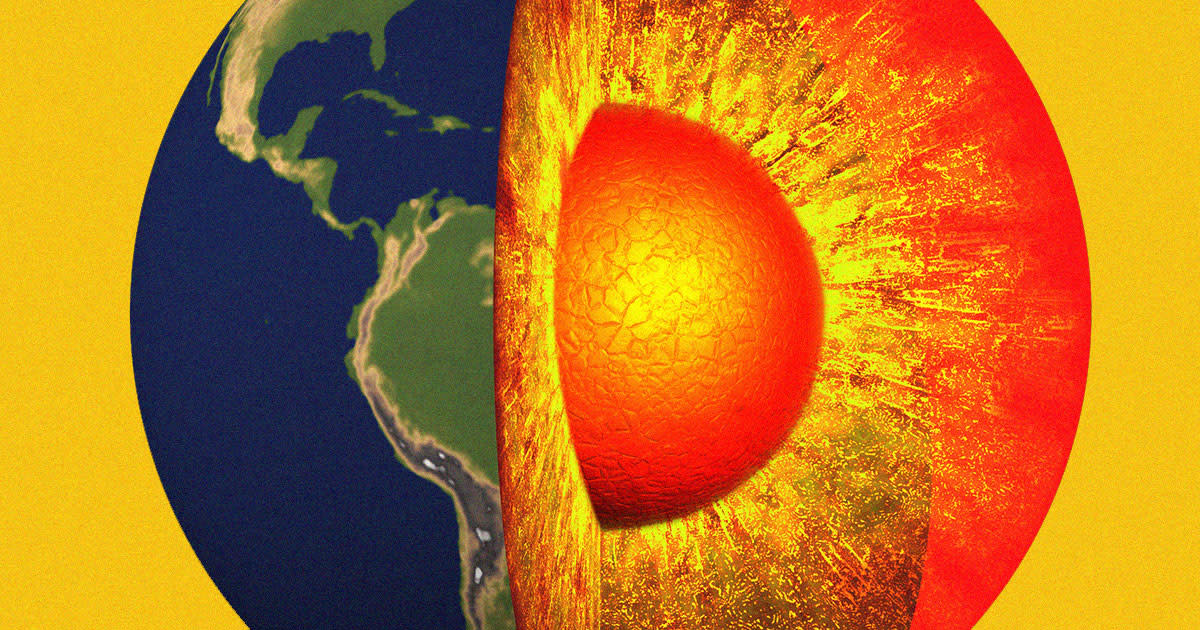Scientists Working to Understand Strange Signal From Earth's Core

Core Strength
In 2019, scientists detected a strange wobble deep below the Earth's surface that oscillates roughly every 8.5 years.
Now, by mapping minute changes in the Earth's rotation, the team has come up with an explanation: our planet's inner core may actually be at an angle in relation to the mantle.
This mysterious "Inner Core Wobble" has led them to suggest that the inner core is denser and heavier in the northwestern hemisphere, tilting it 0.17 degrees away from the planet's mantle.
The research, as detailed in a recent study published in the journal Nature Communications, could change the way we understand the Earth's inner structure and how seismic activity and the magnetic field influence the core's behavior.
Layer Cake
Conventional models suggest that the Earth's core is rotating along the same axis as the mantle, thanks to a uniform density distribution in both layers.
"However, results of the Earth's free oscillation (natural oscillations of Earth as a whole) indicate that the density structures of the Earth's interior are highly heterogeneous, so this assumption should not be realistic," coauthor Hao Ding, dean of the geophysics department at Wuhan University in China, told Phys.org.
"This implies a potential eastward differential rotation angle of the inner core of less than 1 degree and misalignment in the symmetry axes of the lower mantle/core-mantle boundary layer with the upper mantle," Ding said.
The findings challenge the way we understand the motion of the Earth's distinct layers. Especially where the inner core meets its surrounding layers, there's a noticeable change in density, causing the Earth's core to wobble periodically.
The research may also have some wider-reaching implications. The tilt between the inner core and mantle "may also lead to a certain change in the shape of the liquid core, resulting in a change in the fluid motion and a corresponding change in the geomagnetic field," Ding told Phys.org.
But the team is only scratching the surface, and plenty more research still has to be done before we get a more complete picture of what's going on deep beneath the Earth's surface.
More on the Earth's core: There Appears to Be a Slow Leak in Earth's Core, Scientists Say

